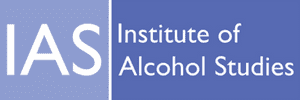Forty years of the breathalyser: RoSPA calls for lower drink-drive limit
Tuesday 9th October marks the 40th
anniversary of the introduction of the drink-drive limit in the UK, and
the roadside testing that enforces it. The Royal Society for the
Prevention of Accidents (RoSPA) is calling a reduction of the limit from
its current level of 80mg of alcohol per 100ml of blood to 50mg per
100ml.
The drink-drive limit for blood alcohol and the associated
education campaigns have been hugely successful in reducing the number
of alcohol-related road accidents. Before the limit was introduced in
1967, there were about 13,000 fatal and serious injuries each year in
which the driver had been drinking. Ten years later, this figure was
about 10,000 and by 1987 it had fallen to 6,800. However, since the
early 1990s, the number of serious and fatal injuries involving alcohol
has stopped falling, remaining at around 3,000 per year.
Whilst the drink drive limit has had a large impact, it
hasn’t entirely lived up to expectations. Kevin Clinton, RoSPA Head of
Road Safety, said, “According to one report from the time, it was hoped
the drink-drive hazard would be ‘effectively nullified.’ Sadly, this
hasn’t happened, and the menace of alcohol is still causing misery.
“It is now time for renewed action. RoSPA is calling for
the drink-drive limit to be reduced to 50mg of alcohol per 100ml of
blood – a move which would save around 65 lives and 230 serious injuries
on Britain’s roads each year. Between 50mg and 80mg, you are two to
two-and-a-half times more likely to be involved in an accident and six
times more likely to be in a fatal crash than with no alcohol in your
system.”
At the same time, the Scottish Government is considering
proposals to cut the limit to 50mg per 100ml, put forward by the Justice
Secretary Kenny MacAskill. The 50mg limit is in force in fourteen of
the twenty seven member states of the European Union. Eight countries
have an even lower limit, leaving the UK, Ireland, Luxembourg and Malta
having the highest limit, at 80mg per 100ml. Cyprus formerly had the
highest limit in Europe, at 90mg per 100ml, but decided earlier this
year to cut their limit to 50ml per 100ml.
RoSPA believes that lowering the legal limit would pave
the way for a new education campaign to raise awareness of the
seriousness of drink driving. The Society will be participating in a
Government consultation on drink-drive laws later this year.
